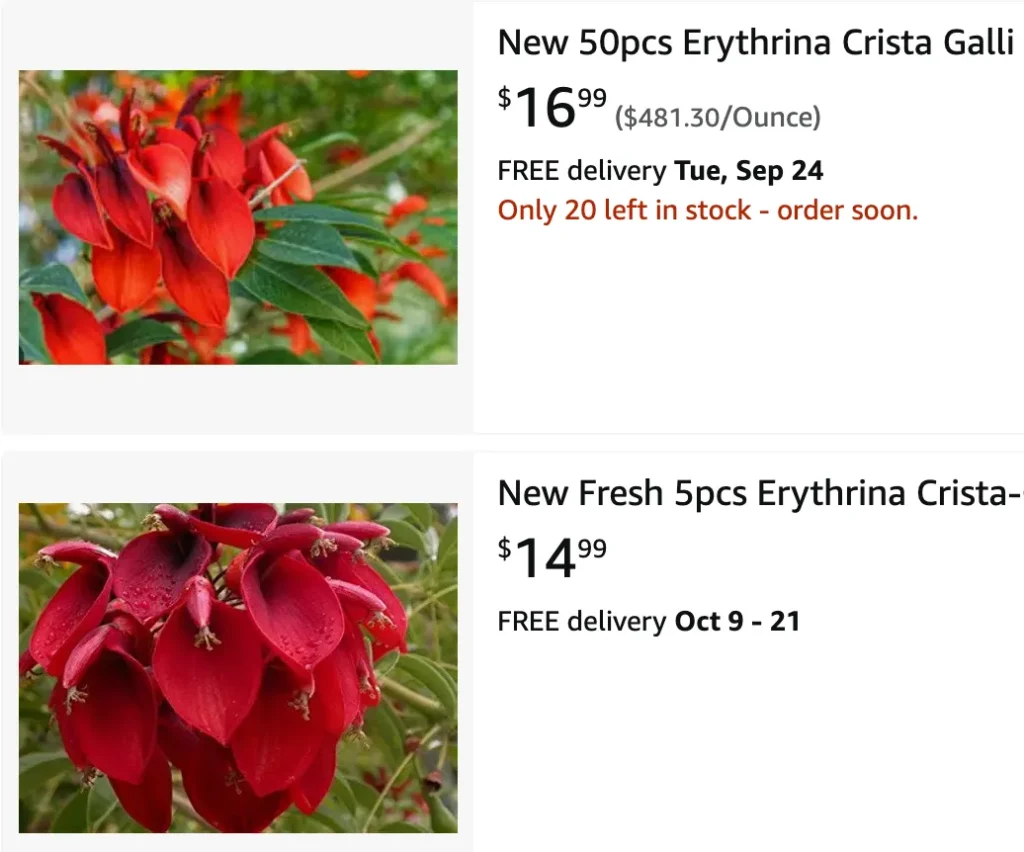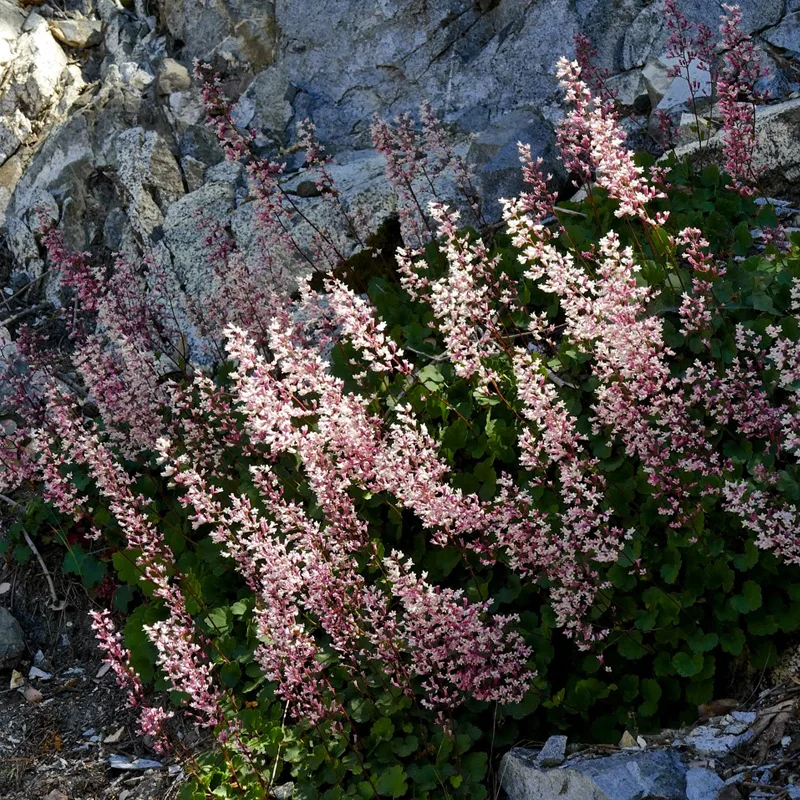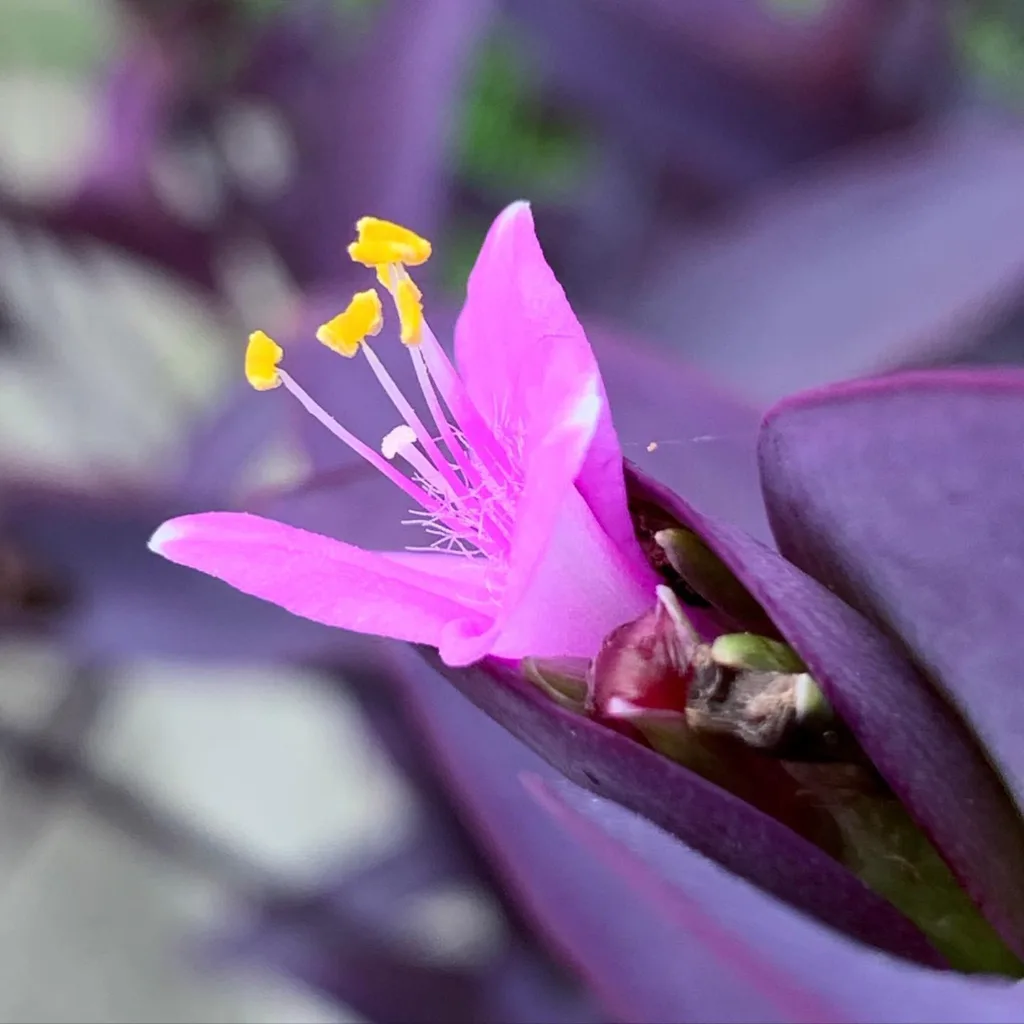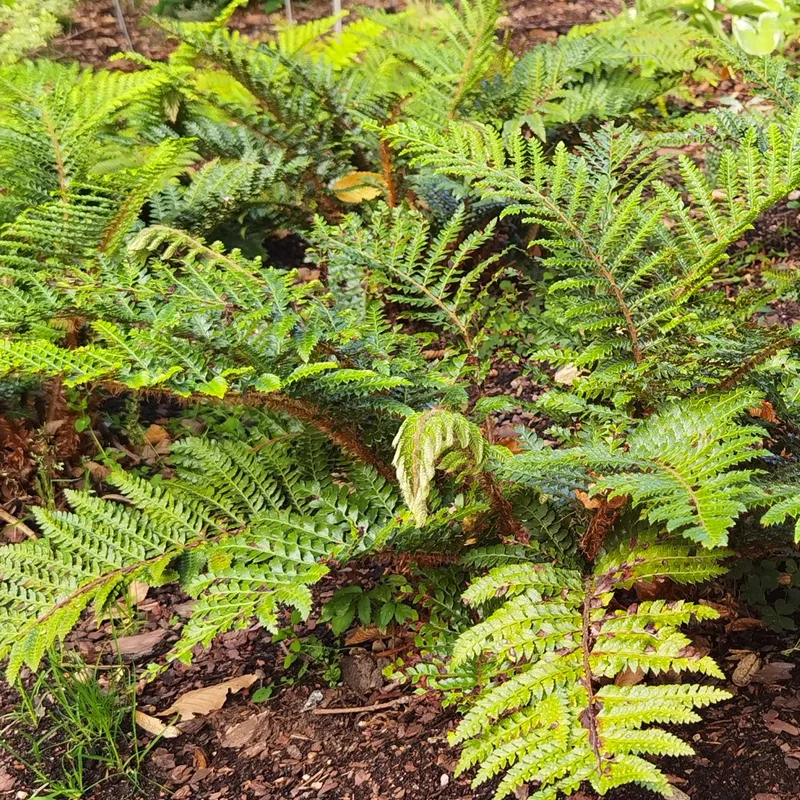
Erythrina Crista Galli: Your Top FAQs Answered
I’ve had the pleasure of growing Erythrina Crista Galli, commonly known as the Cockspur Coral Tree, and let me tell you, it’s an eye-catching addition to any garden. This striking plant, native to South America, is known for its vibrant red flowers and unique, thorny branches. If you’re considering adding one to your garden or just curious about this spectacular plant, I’ve compiled some frequently asked questions that cover everything from care tips to potential problems.
129 Species in Genus Erythrina
What Is Erythrina Crista Galli?
Erythrina Crista Galli is a deciduous tree or shrub renowned for its bright coral-red flowers, which bloom in dense clusters. This plant typically grows to about 10-15 feet tall and wide, making it an excellent choice for adding dramatic color and interest to your garden. Its leaves are trifoliate and have a lush green appearance, contrasting beautifully with its vibrant flowers. Additionally, the plant features distinctive spiny branches, which give it a unique, rugged look.
How to Care for Erythrina Crista Galli?
Caring for Erythrina Crista Galli requires a bit of attention, but it’s quite manageable once you get the hang of it. Here’s a breakdown of the essential care tips:
- Sunlight: This plant thrives in full sun. Aim for at least 6 hours of direct sunlight each day to promote healthy growth and abundant flowering.
- Soil: Erythrina Crista Galli prefers well-draining soil. Sandy loam or a mix with good drainage is ideal. It’s tolerant of poor soils but avoid waterlogged conditions.
- Watering: Regular watering is essential, especially during the plant’s growing season (spring and summer). However, let the soil dry out between waterings to prevent root rot.
- Pruning: Prune the tree after it blooms to maintain its shape and remove any dead or damaged branches. This also helps improve air circulation and encourages new growth.
- Fertilizing: A balanced, slow-release fertilizer applied in early spring can support healthy growth and flowering. Avoid over-fertilizing, which can lead to excessive foliage and reduced blooming.
How to Propagate Erythrina Crista Galli?
Propagating Erythrina Crista Galli can be done through both seeds and cuttings:
- Seeds: Collect seeds from mature pods and sow them in a seed tray with a well-draining potting mix. Keep the soil consistently moist but not soggy. Germination typically occurs within 2-3 weeks.
- Cuttings: Take semi-hardwood cuttings in late summer or early fall. Dip the cut ends in rooting hormone and plant them in a mix of perlite and peat moss. Keep the cuttings in a humid environment until roots develop.
What to Plant With Erythrina Crista Galli?
Pairing Erythrina Crista Galli with complementary plants can enhance its visual appeal. Here are some suggestions:
- Low-Growing Groundcovers: Plants like Liriope or Creeping Thyme can create a lush base that contrasts nicely with the tree’s spiny branches and bright flowers.
- Complementary Flowering Plants: Consider planting with Mexican Sage (Salvia leucantha) or Blanket Flower (Gaillardia), which can complement the red blooms of the Coral Tree.
- Evergreens: Duranta or Podocarpus can provide a year-round backdrop and help frame the Coral Tree’s striking appearance.
Is Erythrina Crista Galli Toxic?
Erythrina Crista Galli is toxic if ingested. The plant contains alkaloids that can cause nausea, vomiting, and other gastrointestinal issues if consumed. It’s important to keep this in mind if you have pets or small children who might be tempted to nibble on the leaves or flowers. While it’s a beautiful and dramatic addition to your garden, it’s best placed out of reach.
Benefits of Erythrina Crista Galli
Erythrina Crista Galli offers several benefits beyond its visual appeal:
- Attracts Pollinators: The vibrant red flowers attract bees, butterflies, and hummingbirds, making it a great choice for a pollinator-friendly garden.
- Shade and Shelter: Its broad canopy can provide shade and shelter for other plants and wildlife in your garden.
- Erosion Control: Its deep root system can help stabilize soil and prevent erosion, especially on slopes.
Common Problems with Erythrina Crista Galli
While Erythrina Crista Galli is relatively hardy, it can face a few issues:
- Pests: Watch out for aphids and scale insects, which can infest the plant and affect its health. Regular inspection and appropriate treatments can manage these pests.
- Diseases: Root rot can occur if the plant is overwatered or if the soil doesn’t drain well. Ensure proper soil conditions and avoid waterlogging to prevent this issue.
Compare with Similar Plants
Erythrina Crista Galli is sometimes confused with other similar-looking trees and shrubs. Here’s a quick comparison:
- Erythrina Variegata: While also known for its bright flowers, Erythrina Variegata has variegated leaves and a more sprawling growth habit compared to Erythrina Crista Galli’s upright form.
- Delonix Regia (Royal Poinciana): Both have striking flowers, but Delonix Regia tends to have a more rounded, umbrella-like canopy and is not thorny like the Coral Tree.
In conclusion, Erythrina Crista Galli is a stunning plant with unique features and specific care requirements. If you’re ready to take on the challenge, it can add a dramatic flair to your garden and attract a host of beneficial pollinators. Just remember to keep its toxicity in mind and choose companion plants that enhance its beauty while complementing its growth.
If i die, water my plants!



